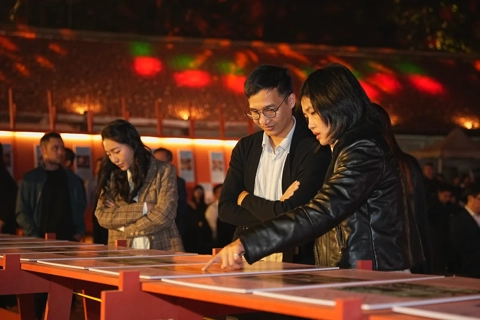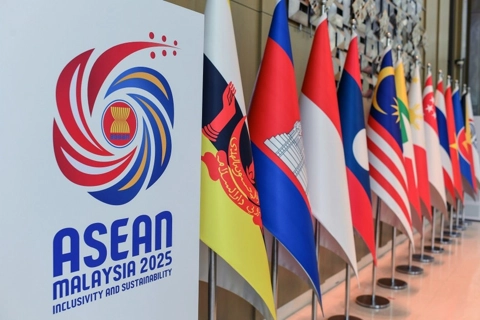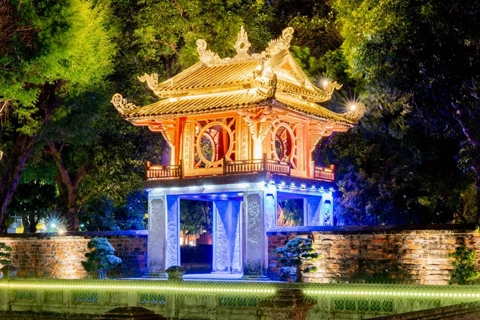Explore Tet Doan Ngo in Hanoi’s ancient citadel
With traditional display, the program helps visitors delve into the ancient venue’s rich cultural soul, turning every step into a journey through history, heritage, and timeless tradition.
THE HANOI TIMES — Hanoi residents and tourists are invited to experience the “Tet Doan Ngo Xua Va Nay” (Doan Ngo Festival: Past and Present) cultural program, featuring reenactments of royal rituals at the Thang Long Imperial Citadel, a UNESCO World Heritage Site.
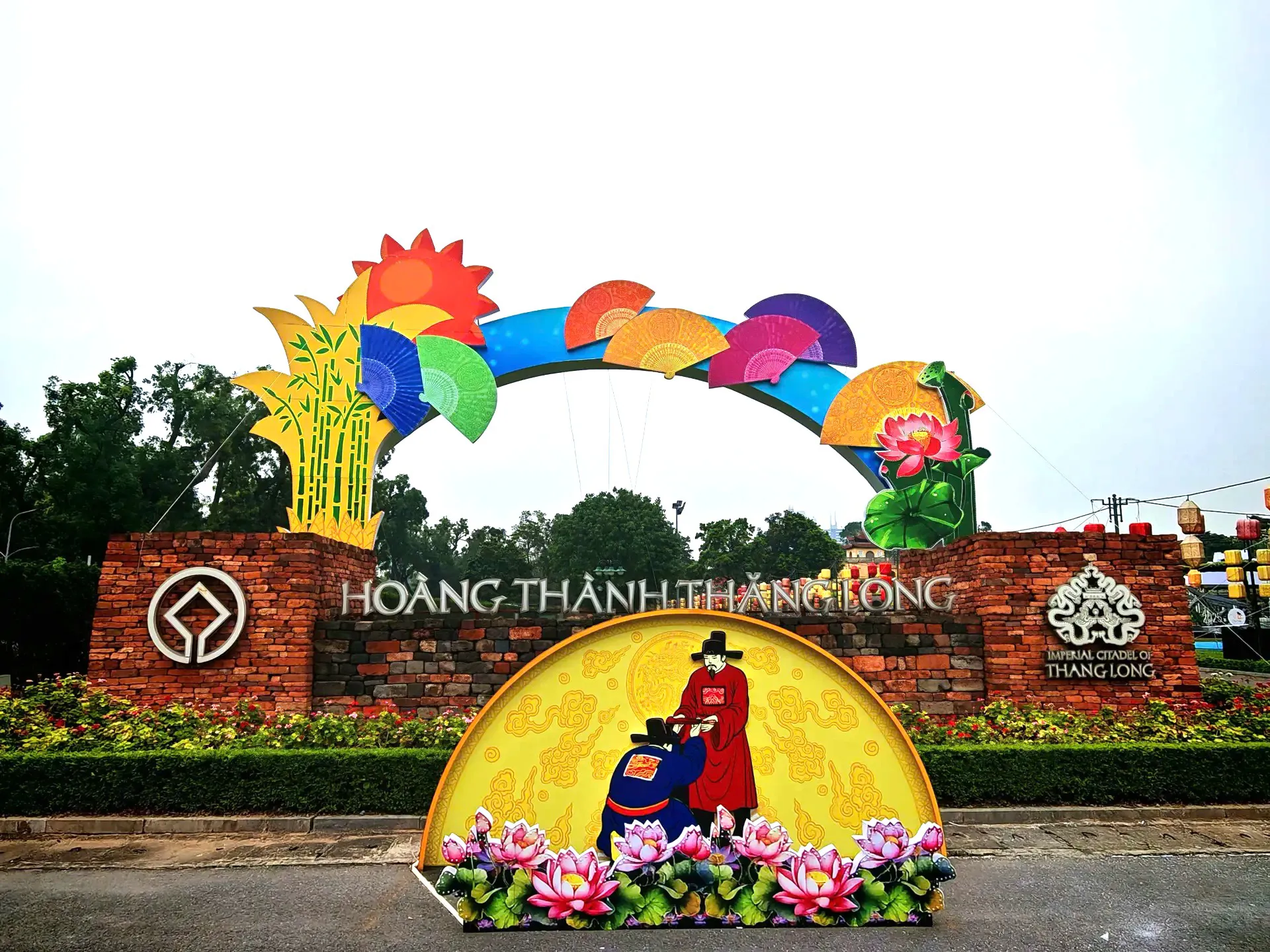
This year's Tet Doan Ngo takes place at the UNESCO-inscribed Thang Long Imperial Citadel. Photos: The Thang Long-Hanoi Heritage Conservation Center
The Tet Doan Ngo, or “Bug Killing Festival” is a traditional mid-year festival observed in Vietnam and several East Asian countries on the 5th day of the 5th lunar month. It originated thousands of years ago when locals expressed their gratitude to ancestors, as well as to heaven and earth for a bountiful harvest.
To celebrate this year’s festival, from May 20 to June 10, the Thang Long – Hanoi Heritage Conservation Center offers a traditional display that brings the festival to life like never before. The program offers visitors a rich cultural journey through Vietnam’s traditions, featuring royal rituals, folk customs, interactive activities, and cross-cultural exchanges designed to deepen public engagement and appreciation for this time-honored celebration.
The festival, with its traditional decorations, artistic performances, and special events on May 31 and June 1, provides a chance to experience the essence of Vietnamese heritage in an immersive setting.
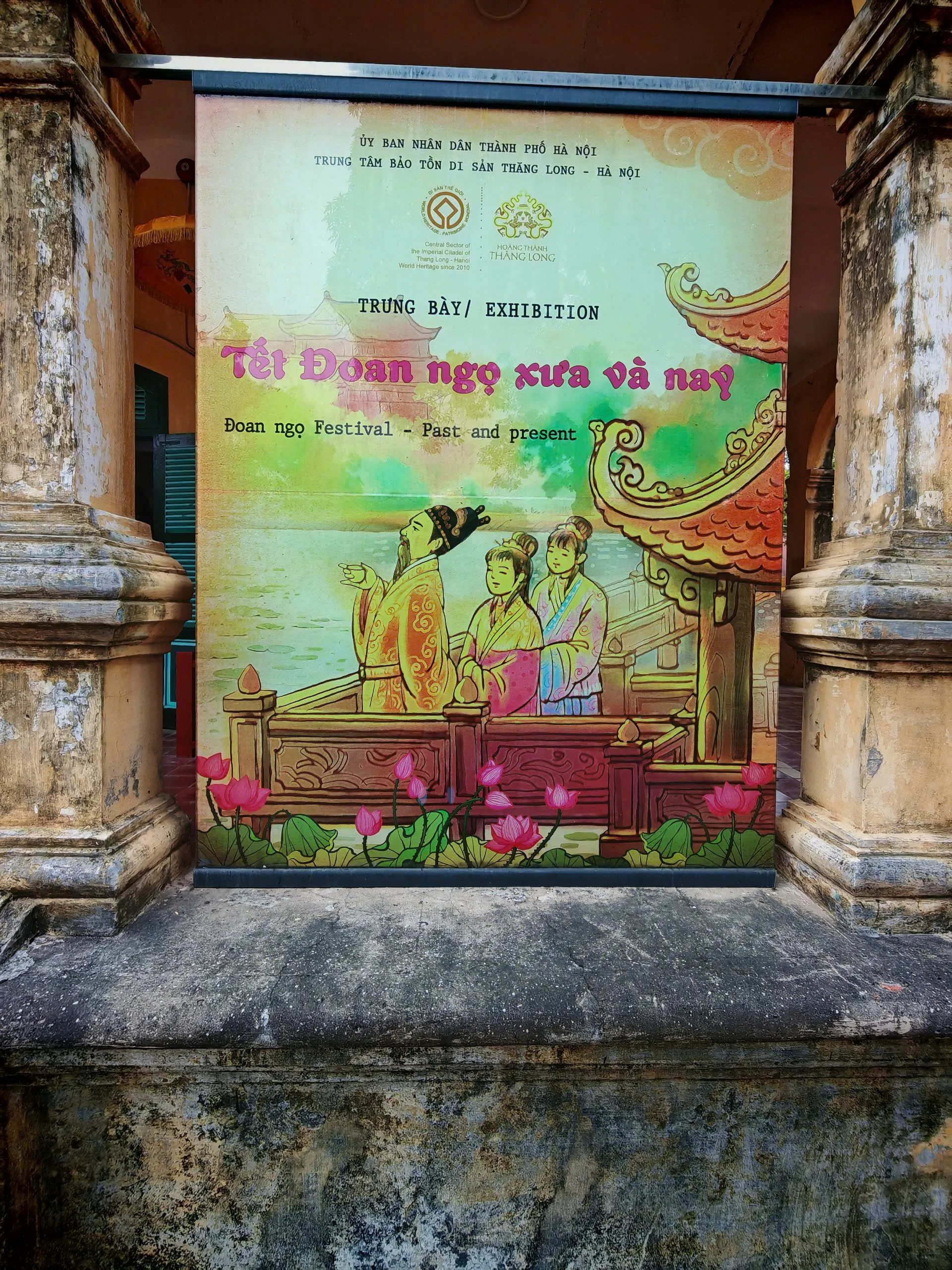
The ancient venue is good for traditional festivals whose royal rituals are re-enacted.
A walk through time with traditional settings
The moment you step through the gates of the Thang Long Imperial Citadel, you are greeted by a striking transformation. The site is decorated with symbolic images and elements typical of Tet Doan Ngo, also known as the Mid-year Festival.
Traditional scenes are recreated throughout the site. Bright banners, bamboo mats, herbal bundles, and seasonal fruits, such as lychees and plums, create a festive and nostalgic atmosphere.
Visitors can walk through displays that mirror royal palaces, village homes, and ancient markets. Each space tells the story of how the Vietnamese people once celebrated Tet Doan Ngo, offering a rare glimpse into both aristocratic and rural traditions.
These immersive scenes serve as visual treats and educational backdrops, helping young and old alike reconnect with the cultural roots of this mid-year festival.
One of the program’s most highly anticipated features is the reenactment of royal court ceremonies from the Le Trung Hung period (1533–1789). These include the ban quat (royal fan awarding) ceremony, where the emperor symbolically gifts fans to officials, a gesture meant to express care and protection during the summer heat.
Actors dressed in elaborate traditional costumes perform these rituals with great attention to detail, accompanied by live music using ancient instruments. Historical props, such as a giant 2.4-meter ceremonial fan inscribed with a poem by King Le Hien Tong, add an authentic touch to the experience. For many visitors, this is a rare and moving encounter with a bygone era that still holds great meaning today.
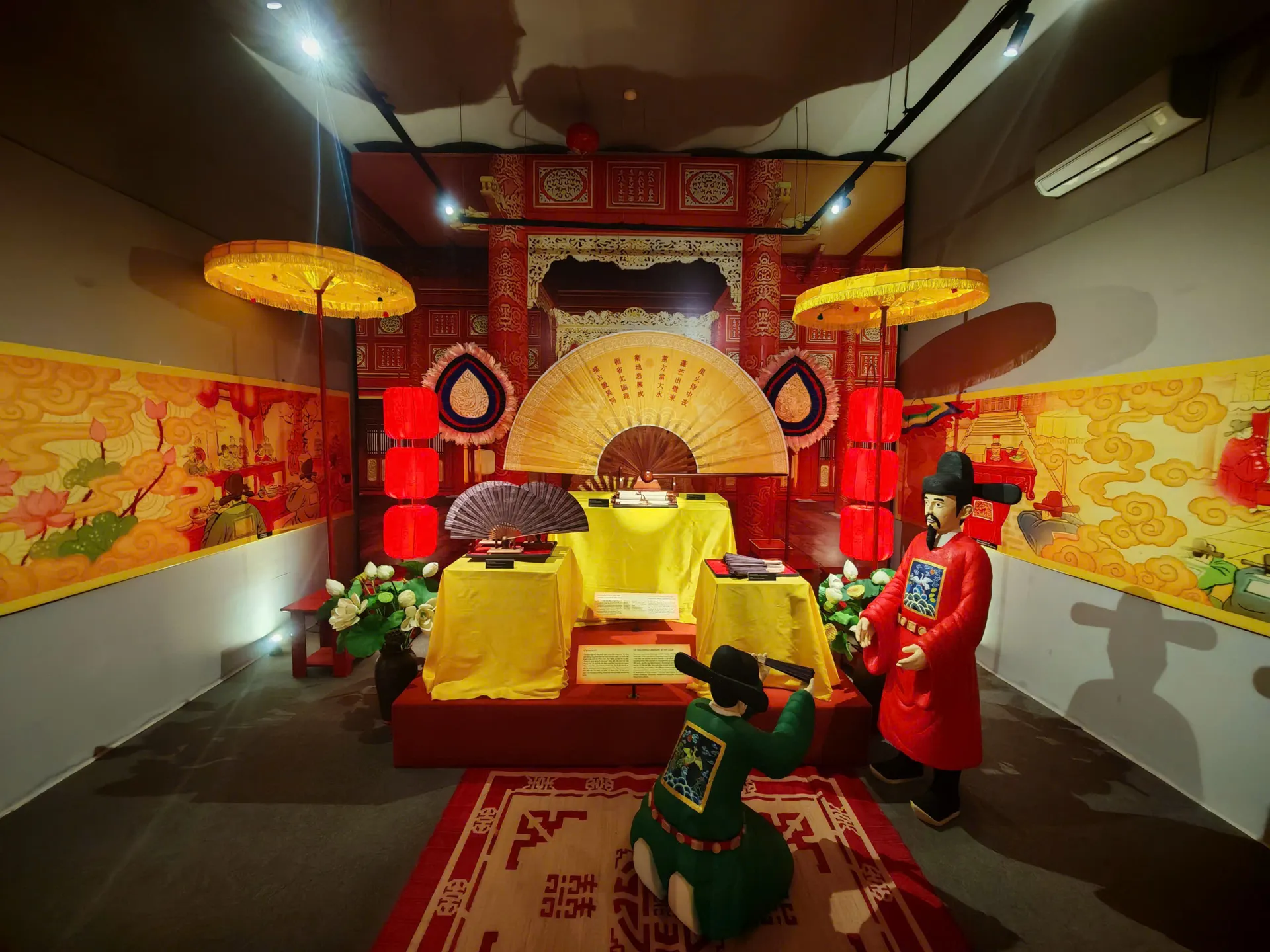
The ban quat (fan awarding) ceremony is re-enacted at the festival.
Hands-on experiences
Besides the formality of court rituals, Tet Doan Ngo is also deeply rooted in folk customs, which are celebrated through a variety of hands-on workshops and demonstrations. Visitors of all ages can try their hand at making banh tro (a unique sticky rice cake steamed in ash water), known for its distinct taste and significance in Doan Ngo celebrations. They can also create herbal sachets, small cloth pouches filled with fragrant medicinal herbs, believed to ward off insects and protect against illness and drink herbal tea made with local ingredients such as chrysanthemum, ginger, and lotus seeds for a refreshing, health-boosting experience.
These interactive activities highlight the Vietnamese folk medicine and daily practices that have been passed down for generations.
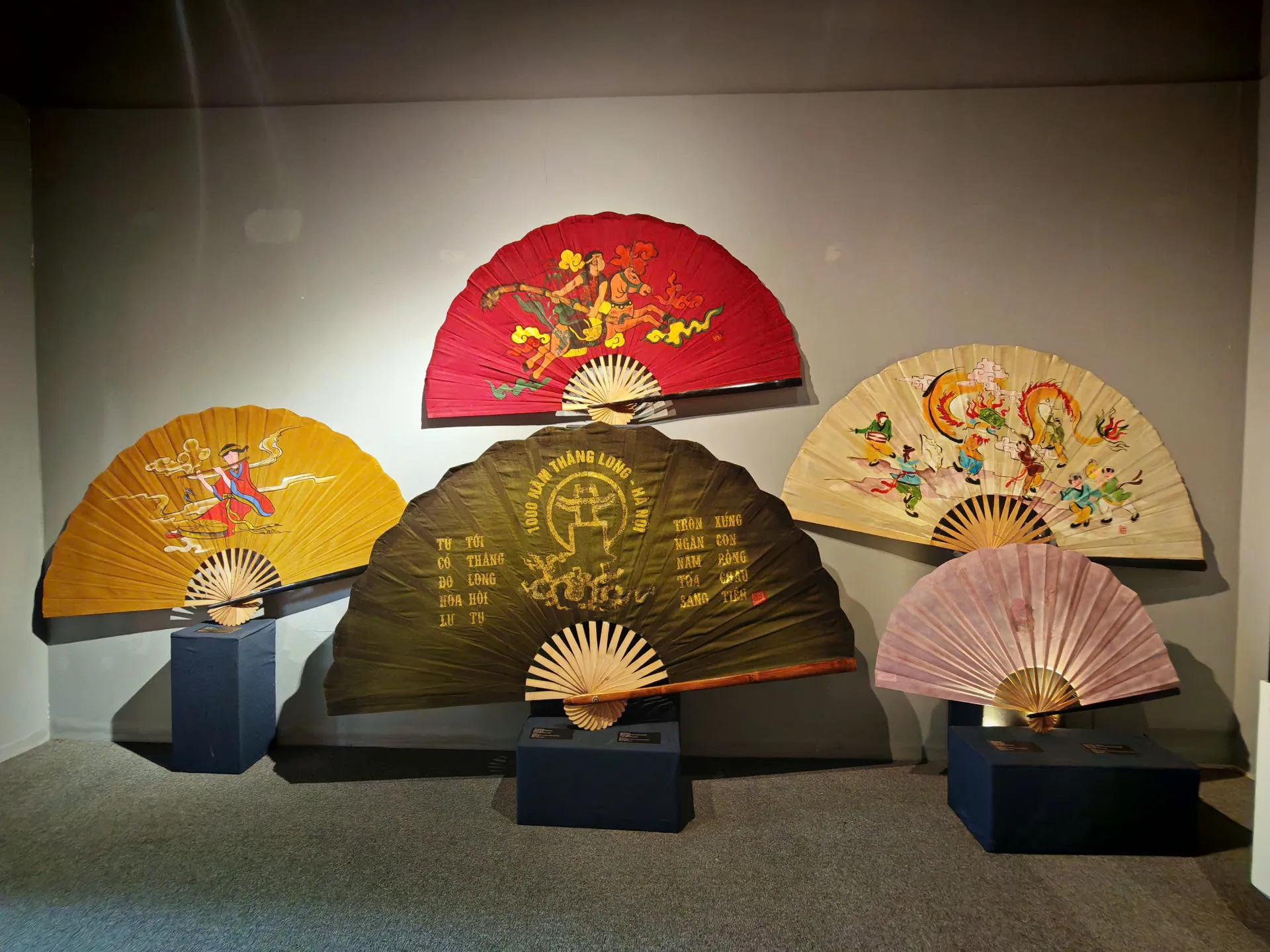
Different kinds of fans displayed at the venue.
Cultural performances
Throughout the festival, traditional Vietnamese performing arts take center stage with water puppetry, a centuries-old art form unique to Vietnam, that draws enthusiastic crowds with its colorful puppets, lively music, and engaging stories. Other performances include hat xam (blind street singer’s songs), cheo (traditional opera), and folk dances that bring energy and rhythm to the historic surroundings.
These shows are more than entertainment; they are living traditions. For international visitors unfamiliar with Vietnamese culture. For locals, they offer a beautiful entry point into the country’s artistic soul while they are a nostalgic reminder of their own heritage.
Meanwhile, folk games such as rope jumping, tug-of-war, and blindfolded clay pot breaking are available throughout the grounds for young visitors. These traditional games allow younger generations to experience the simple joys that once defined festive days in Vietnamese villages.
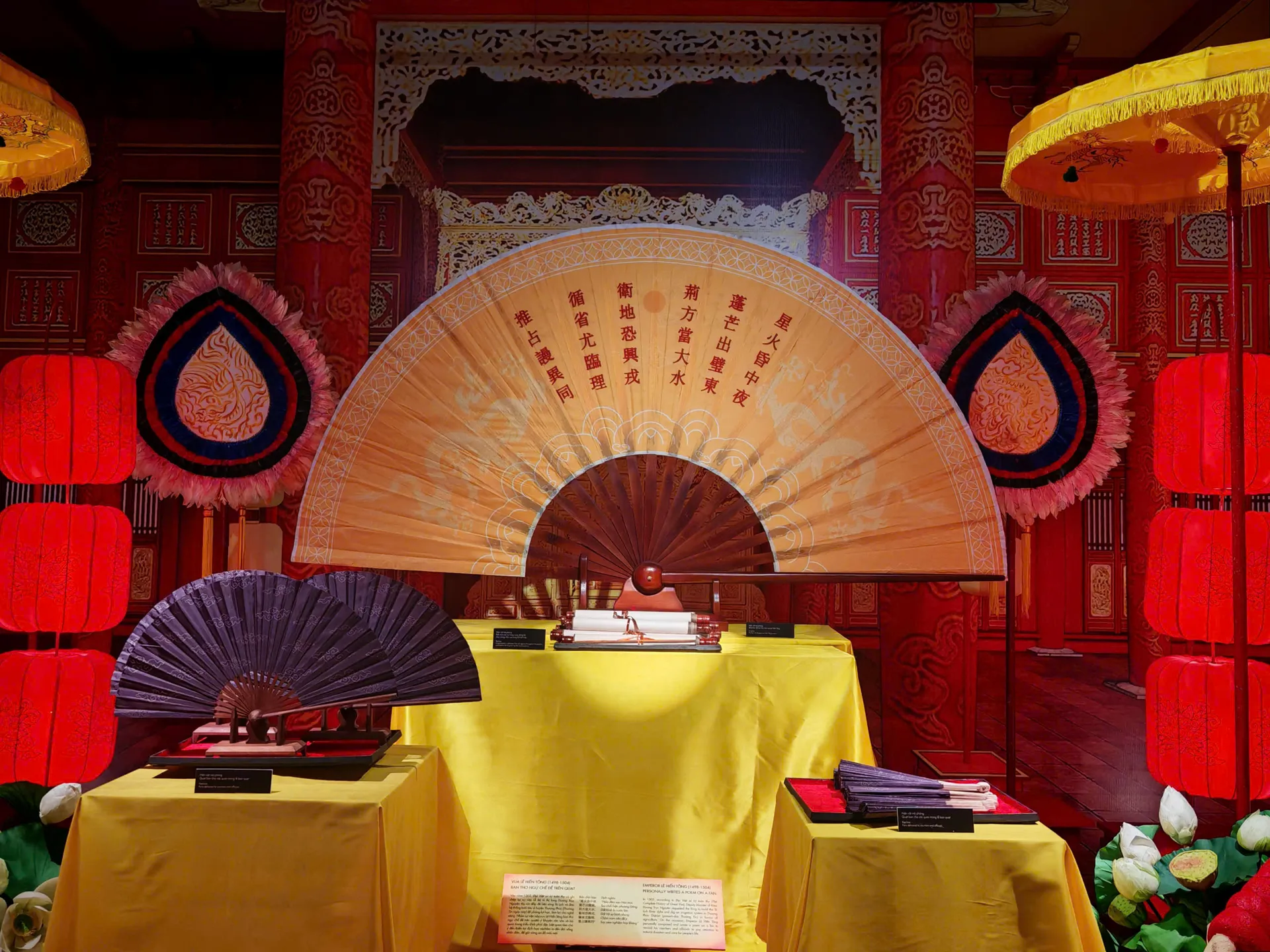
The festive decoration inside the imperial citadel.
Cultural exchange
Adding to the excitement this year are two days dedicated to cultural exchange on May 31 and June 1. During these special events, artists, researchers, and culture lovers from across Vietnam, and some from abroad, gather to share ideas and experiences.
Apart from all traditional display, the workshops, panel discussions, and joint performances allow for deep engagement and cross-cultural learning with topics ranging from traditional medicine and heritage preservation to costume design and classical literature.
These activities enrich the festival and position Tet Doan Ngo as a cultural bridge, connecting Vietnam’s past with global conversations on identity, tradition, and sustainability.
“Tet Doan Ngo Xua va Nay” is a tribute to Vietnam’s cultural legacy as it revives old customs in a way that feels both authentic and relevant. For Hanoi residents, the program provides an opportunity to reconnect with their roots. For tourists, it offers a vivid introduction to life in Vietnam beyond the usual landmarks.
The Thang Long Imperial Citadel, with its layers of history and symbolism, serves as the perfect venue. As visitors explore its grounds, they are not just observing history but becoming a part of it.
For updates and detailed schedules, visit the official website of the Thang Long – Hanoi Heritage Conservation Center.
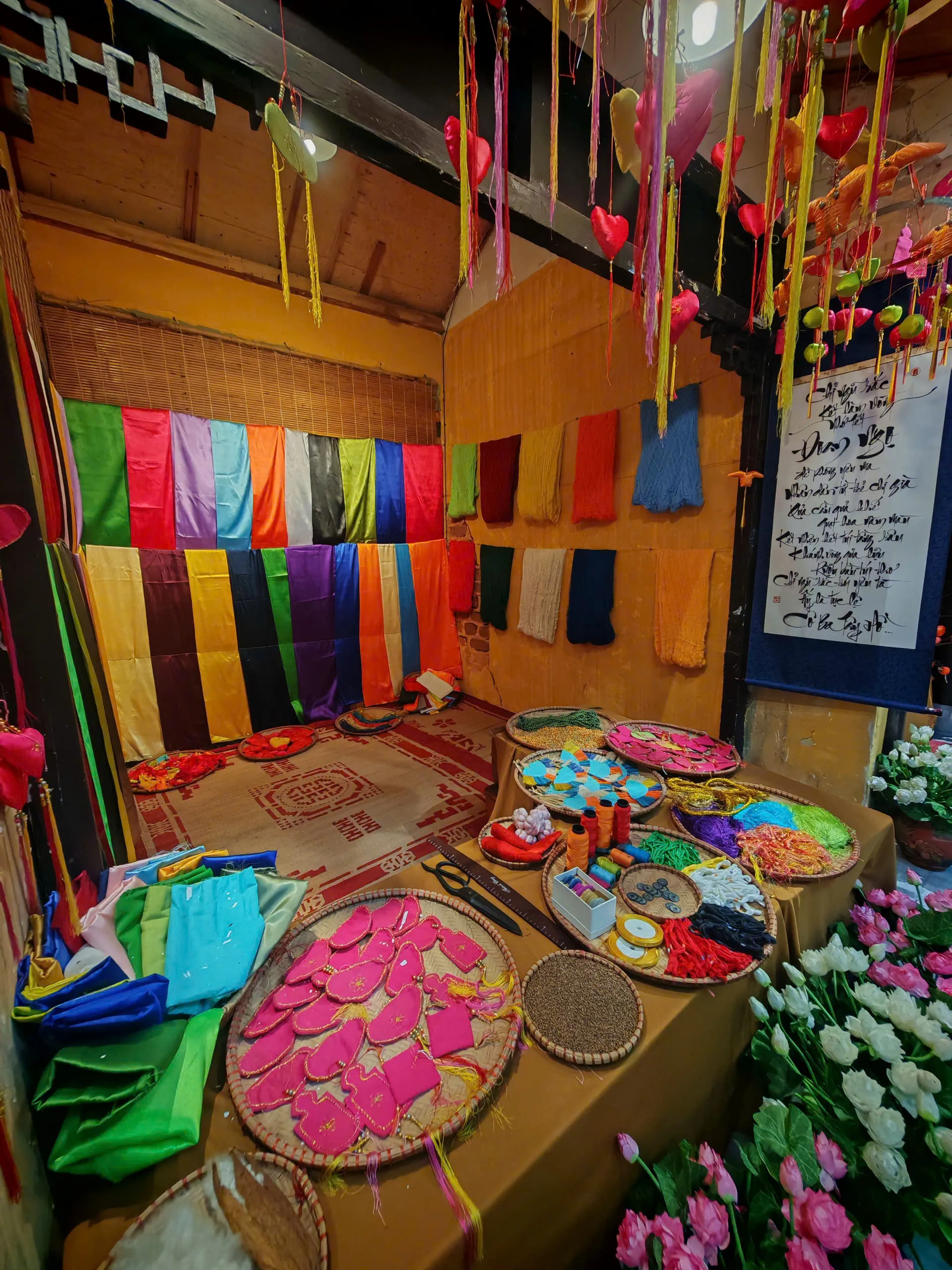
Traditional silk displayed at the venue.
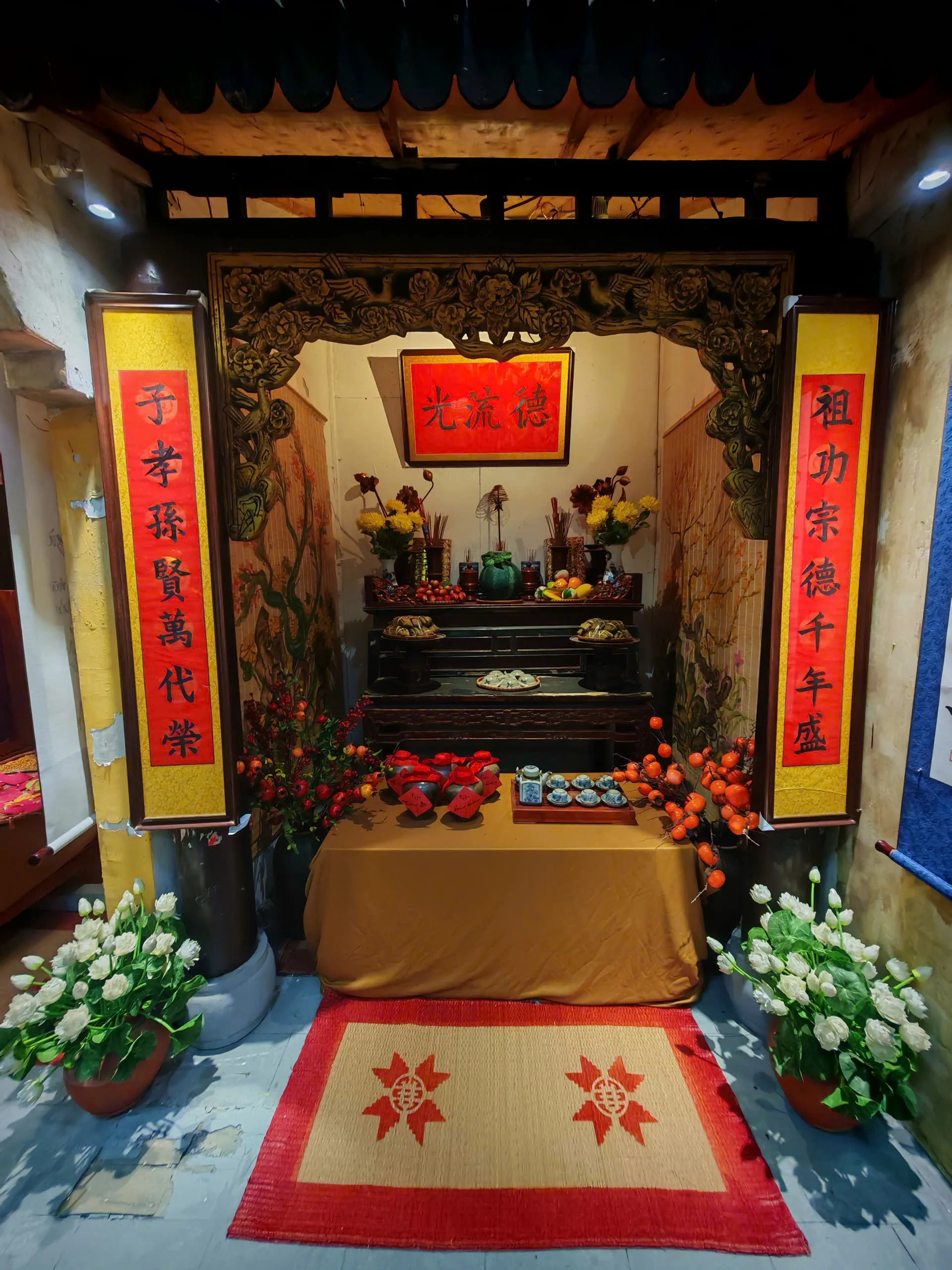
The traditional alter where ancestors are worshiped in Vietnamese culture.
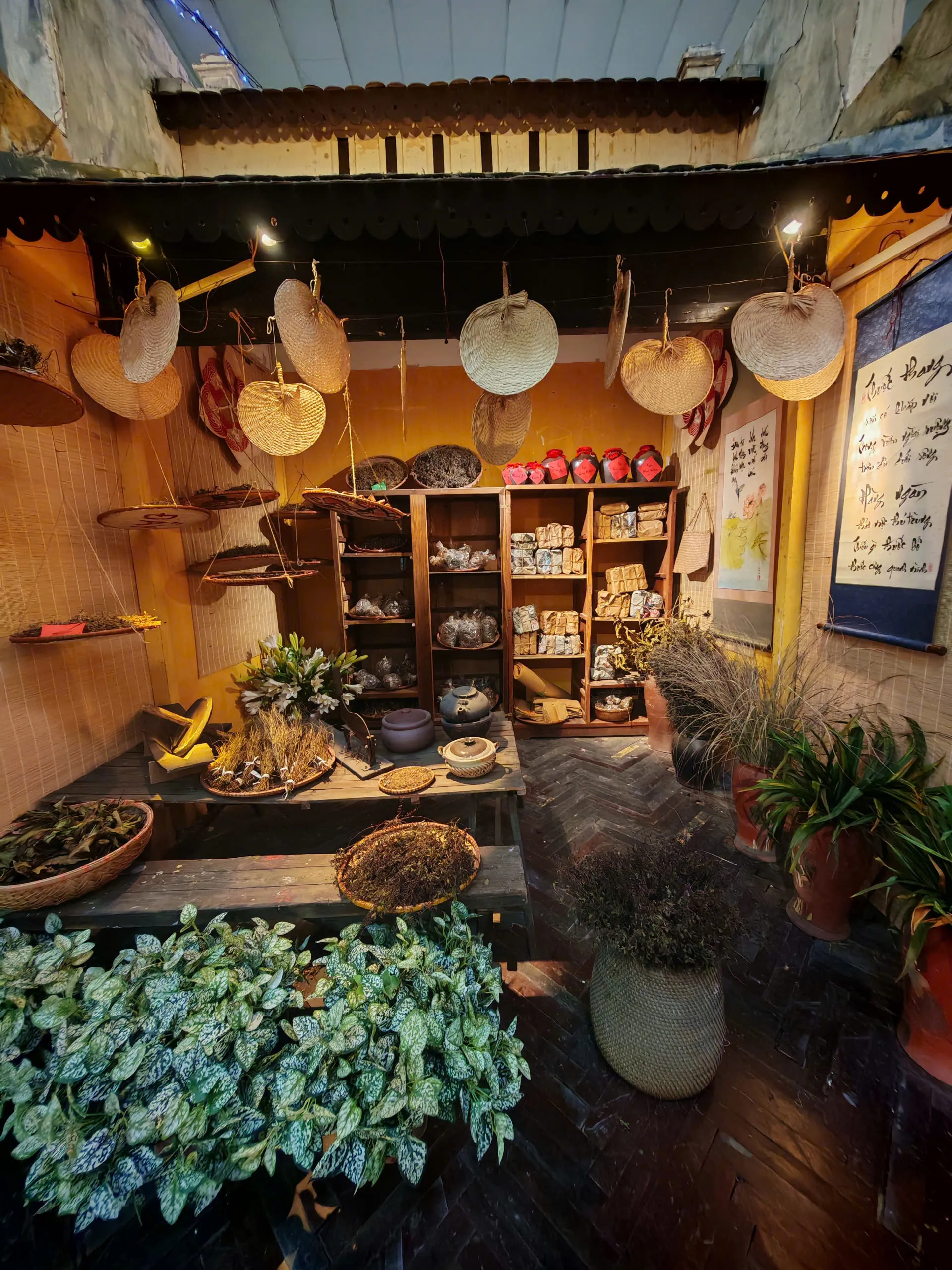
Traditional herbs showcased in this year's festival.
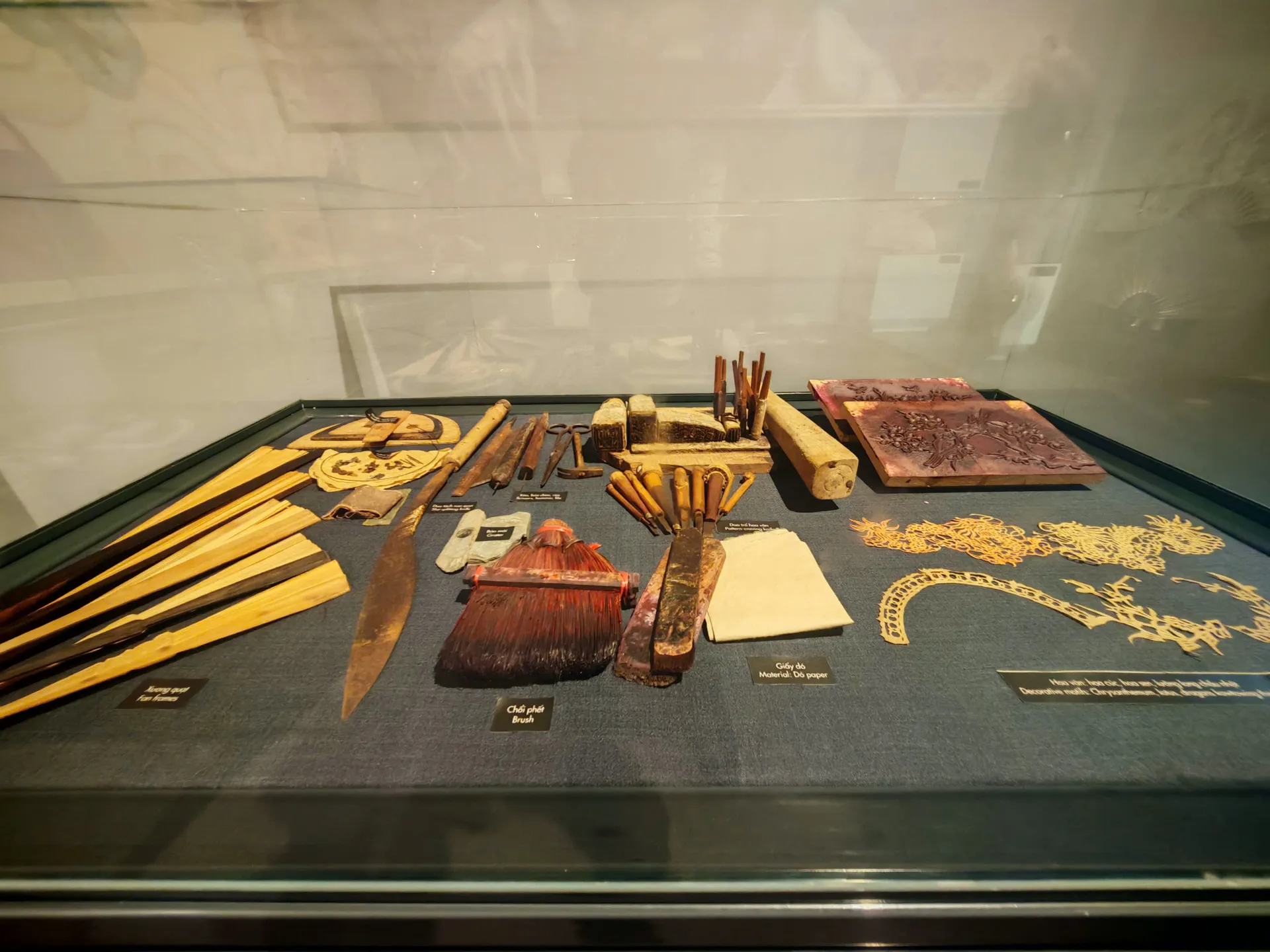
Artifacts displayed at the venue.




